On March 11, 2011, a magnitude 9.0 earthquake struck the eastern coast of Japan, setting in motion three different disasters. In addition to the quake, a massive tsunami obliterated coastal villages and towns and precipitated a meltdown at the Fukushima Daiichi Nuclear Power Plant.
Known locally as 3.11, the Great East Japan Earthquake was one of the most destructive natural disasters in the country’s history, with the death toll estimated at 16,000, although many bodies were never found.
The tsunami surge, more than 130-feet-high in some areas, tossed cars into third-storey windows and reduced houses and shops to something resembling a giant game of pick-up-sticks. Images of vehicles twisted into unrecognizable crumples of metal and rubber, and fishing boats listing high on dry land maintain a level of surrealism.
In photos that detail the destruction, it’s often hard to understand what you’re looking at.
Given all this, you might think the Museum of Anthropology’s new exhibition A Future for Memory: Art and Life After the Great East Japan Earthquake would be resolutely grim, but there are many moments of surprising resilience and even joy in the show.
Some of the most startling things are the least expected, such as the tiny blue flowers of indigenous plants, sprung from the tsunami’s upheaval of the seabed, that blossomed in the aftermath of the destruction.
The museum’s Asia curator Fuyubi Nakamura took pains to balance the elegiac qualities of the exhibition with hope, community and commitments to rebuild.
Nakamura initially travelled to the area to work as a volunteer in the months after the disaster and returned every year until the pandemic. She says she didn’t want to be one of the people who parachuted into the area and took what they needed, whether that was documentary footage or material for news reports, and then left.
Her relationship with the people of the region has grown over the year and, as a sociocultural anthropologist, she was intrigued by the reactions of residents and survivors.
Although A Future of Memory is informed by the practical considerations of rebuilding, it is equally concerned with the mysterious ways that people structure meaning in the wake of catastrophe.
This exhibition marks the 10th anniversary of the disaster. Even a decade later, wrapping your head around the sheer scale of destruction is difficult.
There’s no escape from the eeriness that suffuses many of the images on display. Children’s toys, abandoned schools and family photographs eaten away by seawater carry with them a weight of grief that is almost unendurable.
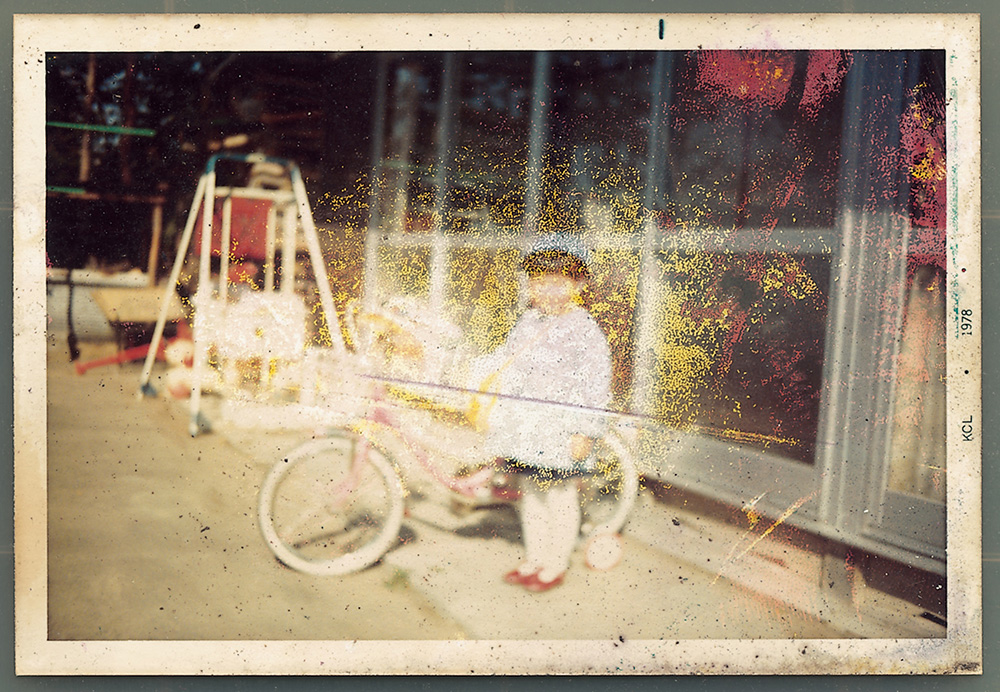
But many of the works take as their genesis the continued perseverance of people in finding a way forward out of tragedy.
Nakamura included the work of different artists whose respective disciplines speak to not only the human experience, but also that of the natural world.
The Japanese artform of ikebana (flower arranging) offers a point of entry into the exhibition. Ikebana master Atsunobu Katagiri spent eight months in the area around Fukushima creating installations in situ and documenting his work in a series entitled Sacrifice.
His images carry a curious juxtaposition of beauty and grief. Petals tossed into tidal foam or spilling out of an abandoned piano carry a soundless shock wave of impact.
The small blue blossoms of the endangered indigenous plant Monochoria korsakowii, which reclaimed its traditional territory following the tsunami, form a centrepiece of Katagiri’s work. This rebirth offers a poetic convergence of delicacy amidst destruction.
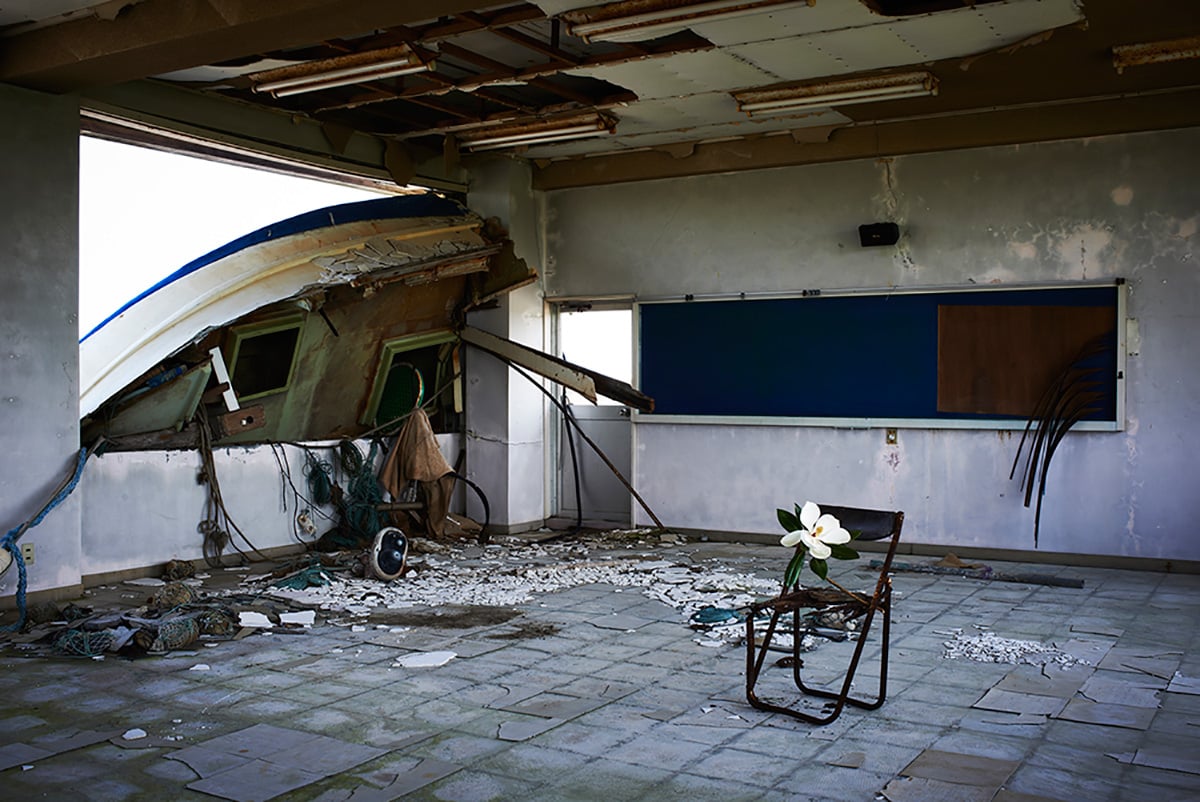
Masao Okabe also used the impact of the disaster on the natural world to create his work The Irradiated Trees Series: From Hiroshima to Fukushima. The centre piece of Okabe’s installation features 114 rubbings on paper, as well as short texts and video documentation from collaborator and photographer Chihiro Minato.
To create the work, the artist had to be decked out in full hazmat gear and, under the supervision of local authorities, to take rubbings (frottage is the technical term) from the dead and dying trees near Fukushima. The images are arranged around a central core, not unlike an enormous tree trunk or a nuclear reactor.
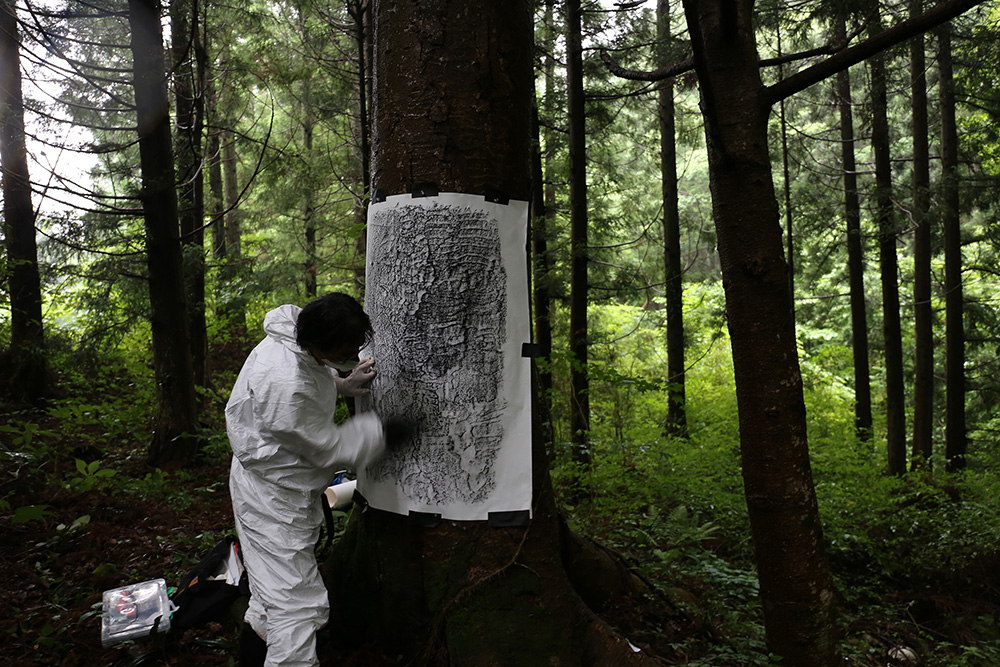
Inside the blindingly white interior of the structure, black resinous-looking squares are arranged on the floor. It is a Kubrickian-like space, akin to a science fiction film, a quality further amplified by the growth rings of dead trees housed inside each black block, like the fingerprints of some lost race of giant beings.
Objects play a particularly profound role in the exhibition, especially personal photographs. The Omoide Salvage project collected, cleaned and digitized photographs that were found after the disaster and set about reuniting people with the images of the past. To date, some 750,000 photographs have been found.
The 5,000 images that were too heavily damaged to find their way home grace a centre wall in the show, with undulating patterns of sea-leached colours. These orphaned images became the Lost & Found Project. Nakamura worked on another similar project, cleaning the photographs and helping to reunite people with the mementos of their past.
Some of these images — wedding photos, family dinners, holidays snaps — are poignant in their very ordinariness. As Nakamura says, “It is the materiality of the photographs that is important.” Something tangible that remained when other parts of life have been washed away.
Many museums contributed work to the exhibit, including the Rias Ark Museum of Art and the centre for remembering 3.11, but one of the most fascinating installations is the Lost Homes scale model restoration project. It’s a miniature model of Ōfunato City in Iwate Prefecture, a town that was devastated by the tsunami. The project pairs architects and urban designers with local residents to preserve the memories of a lost city.
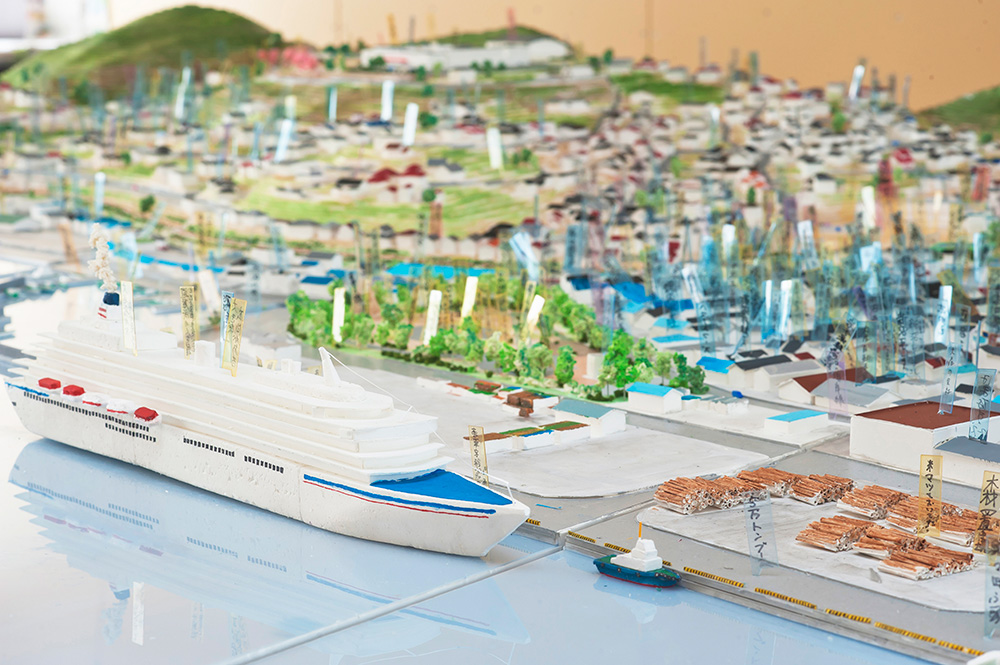
At first glance, the model looks like something from a Miyazaki animated film, but a closer investigation reveals that many of the tiny structures on display no longer exist. Each of the homes, stores and buildings comes with a small flag that details memories about what once stood there. Alongside the maquette is a scale that measures out the height of the tsunami when it breached the town.
While physical manifestations of the earthquake and its related impacts make up the majority of the exhibit, another component is the personal relationships that sprang up in the years following the disaster. The connections that formed between people provided the impetus for the short documentary Tsunami Ladies.
The film follows two groups of women — one from Japan, the other from Chile — who lived through massive earthquakes. The groups bond through sharing cooking, blending Chilean and Japanese ingredients and recipes into tasty new fusions. It’s a charming and often very funny film. As one woman notes, she survived the disaster but had to move away because she couldn’t handle her mother-in-law.
In another section that traces the connections that came about because of the disaster, the discovery of a Japanese fishing vessel on the remote island of Haida Gwaii is retold in photographs and text. The owner of the boat was reunited with his property and met the man who found it.
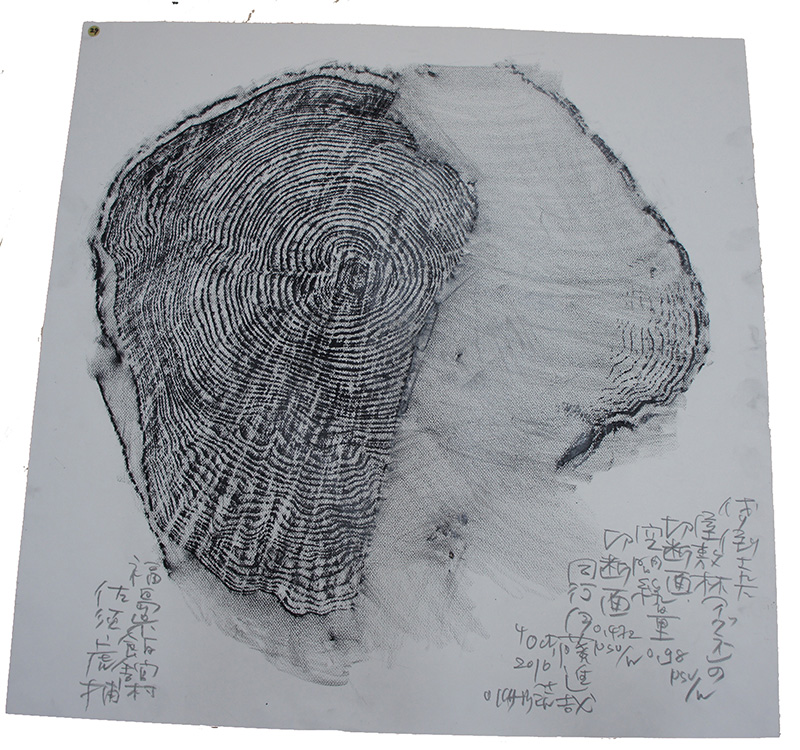
The aftershocks of the exhibition linger long, a reminder that Vancouver and the Pacific coast are also vulnerable. Indeed, the Great Hall at the Museum of Anthropology is currently closed off for seismic upgrading.
A Future for Memory: Art and Life After the Great East Japan Earthquake runs until Sept. 5 at the Museum of Anthropology. ![]()
Read more: Art, Environment



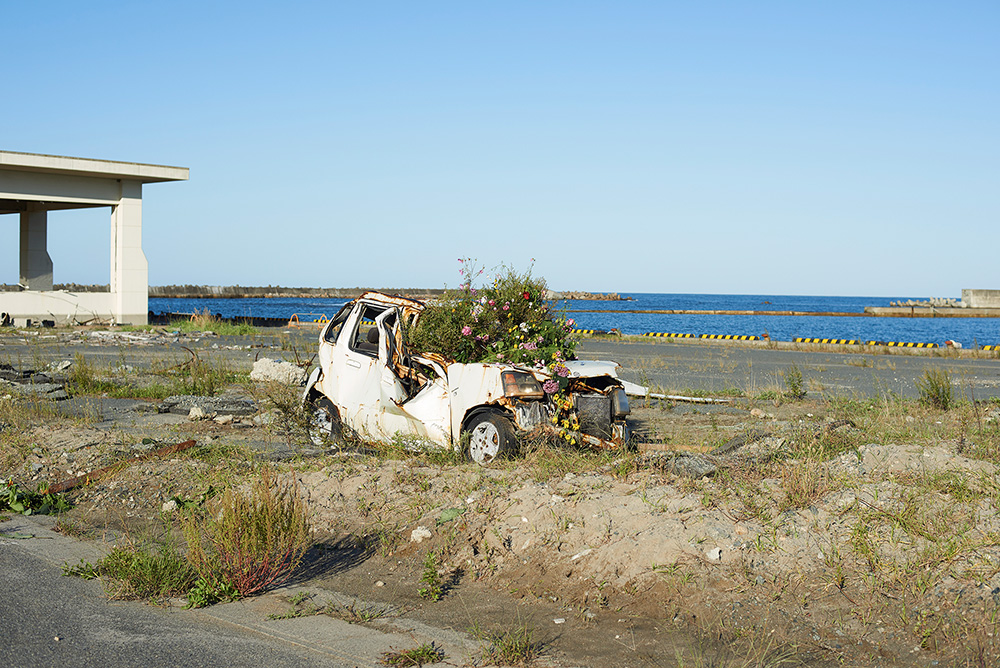












Tyee Commenting Guidelines
Comments that violate guidelines risk being deleted, and violations may result in a temporary or permanent user ban. Maintain the spirit of good conversation to stay in the discussion.
*Please note The Tyee is not a forum for spreading misinformation about COVID-19, denying its existence or minimizing its risk to public health.
Do:
Do not: